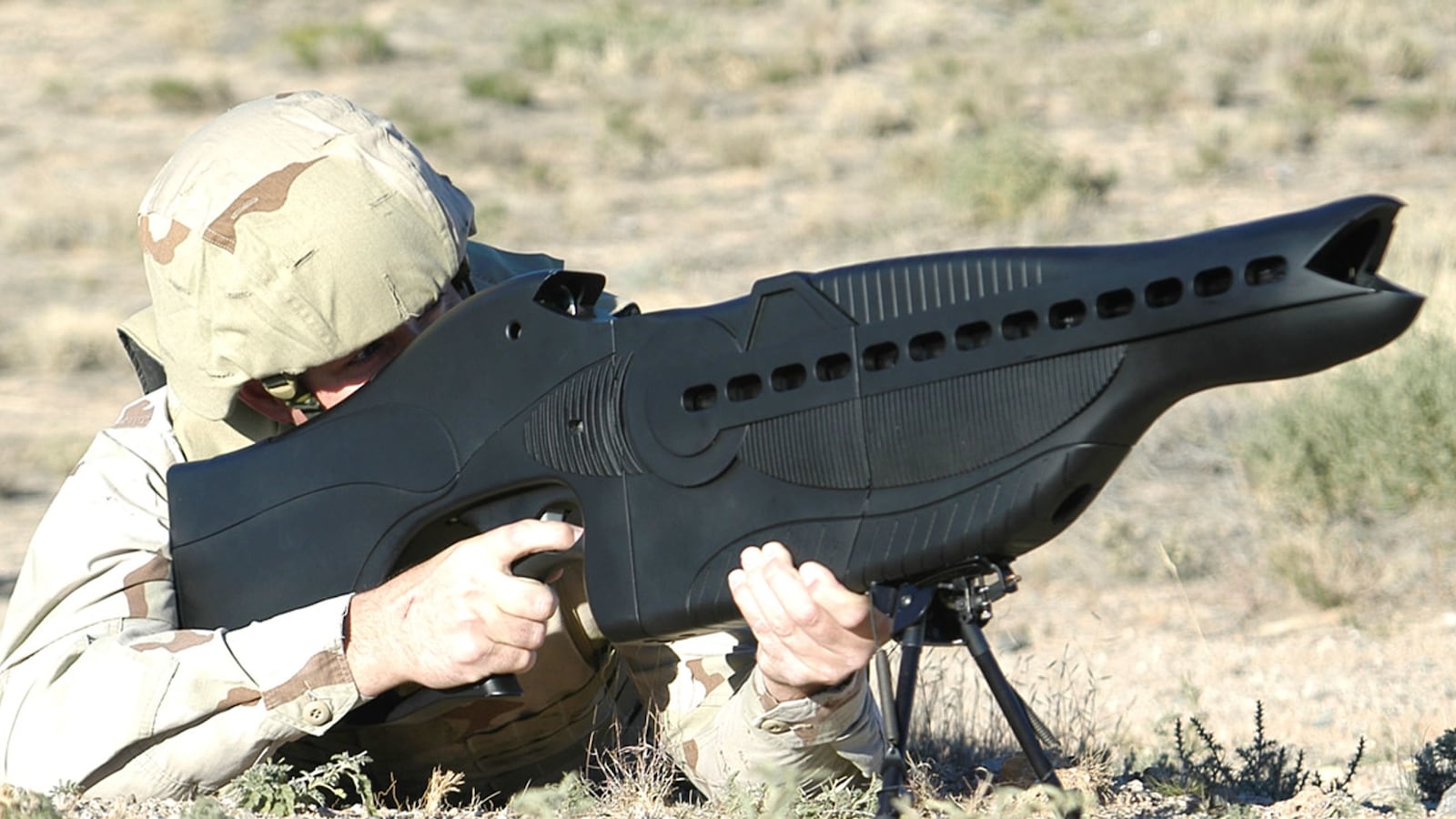Laser rifles. Canine air conditioners. There are lots of gadgets that U.S. commandos would love to have, except for the fact that these items don't even exist.

That's why the U.S. Army Special Operations Command (USASOC), which includes the Army's Special Forces and Rangers, has published a long list of equipment that it wants private industry to develop and build.
What is fascinating about this list isn't just that it tells us what capabilities U.S. special operations forces want. It also tells us what capabilities they don't have.
But just as important, it's a forecast of the kind of warfare that American commandos anticipate they will be fighting. Special operations forces, along with drones, have now become America's preferred method of waging war. If commandos get a new weapon or sensor, it probably will be used on a real mission or battlefield. And when the special operators get new technology, then it sometimes trickles down to the rest of the military, and from there to the civilian world.
Here are some of the more interesting items on the U.S. commando wish list:
Laser rifles. The Army wants a handheld directed-energy weapon that is capable of both inflicting pain or using lethal force. "No one handheld system provides operators with the capability to disperse non-combatants and then 'scale up to lethal effects' for enemy combatants," the Army says. For operators who might be fighting insurgents one moment and confronting angry villagers the next, the ability to switch from non-lethal to lethal force with the same gun would be useful.
The Army suggests that laser, microwave or acoustic weapons are the answer. Microwave "pain rays" and acoustic crowd dispersal weapons already exist. Weapons that make you feel like your skin is on fire could probably be ramped up to the lethal zone. The tough part may be making such a device small enough to be handheld.
Covert body armor. Standard body armor "produces a significant visual signature which is unacceptable for Unconventional Warfare applications", notes the Army. This is a bureaucratic way of saying that it's hard for commandos to blend in with the locals with flak jackets underneath their robes. Hence the Army is keen to get body armor "that can be woven to replicate local attire but will provide operator protection from all edged and many small arms weapons." But the more intriguing suggestion is "energy-based systems which can deflect ballistic or edged weapon attacks without creating a visual signature." This almost sounds like a Star Trek deflector shield.
Lie detectors. These would go far beyond polygraphs. The Army is interested in spotting lies by detecting infrared changes in a suspect's temperature, or by measuring the dilation of his pupils and pores.
Tactical biometrics. It's not fun to conduct a hazardous snatch of an insurgent leader, only to find you grabbed the wrong guy. Commandos currently can't collect and identify a suspect's DNA records on the spot. USASOC is looking for an instant biometric system, possibly on a smartphone, that can be used in covert operations.
Canine air conditioners. The U.S. and other militaries use dogs for tasks like detecting IEDs. But as if being a mine detector isn't dangerous enough, the poor animals can overheat in hot climates. The Army wants a portable cooling pack to "cool the canine with a cooling pad and battery-run cooling circulation," or perhaps give thedogs phase-change cooling gear used by humans.
Reactive-fiber clothing. If you're tired of putting on and then shedding layers of clothing on a fall day, Army special operators have it even worse when temperatures fall as they climb higher up mountains. The commandos want a single garment made of "reactive" fibers that will allow heating and cooling as temperatures vary.
Google Glass-style shades. Commandos would love to have their own form of Google Glasses. The Army is searching for a goggle that resembles sunglasses, yet the soldier can receive and see video from drones, photographs or location data on friendly and enemy forces (perhaps they will resemble this civilian model).
However, the problem isn't just that U.S. commandos want high-tech gear. It's that the enemy is also using such gear against American troops. Several projects on USASOC's wish list are designed to keep America's elite warriors hidden. For example, the Army wants an undetectable aiming laser for small arms. Why? Because "commercially available night vision systems are being employed by enemy forces which allow adversaries to observe ARSOF [Army Special Operations Forces] aiming lasers."
The Army also wants thermal beacons that can mark the location of friendly forces, but are undetectable by enemy night vision devices (radio-frequency beacons are mentioned as a possible solution).
Will this wish list ever come true? Special Operations Command (SOCOM) - the umbrella organization for America's special forces - requested $427 million last year for research, development and testing.
If anyone gets a laser rifle, it will be America's commandos.
Michael Peck is a contributing writer at Foreign Policy Magazine and a writer for the War is Boring defense blog. Twitter: https://twitter.com/Mipeck1






